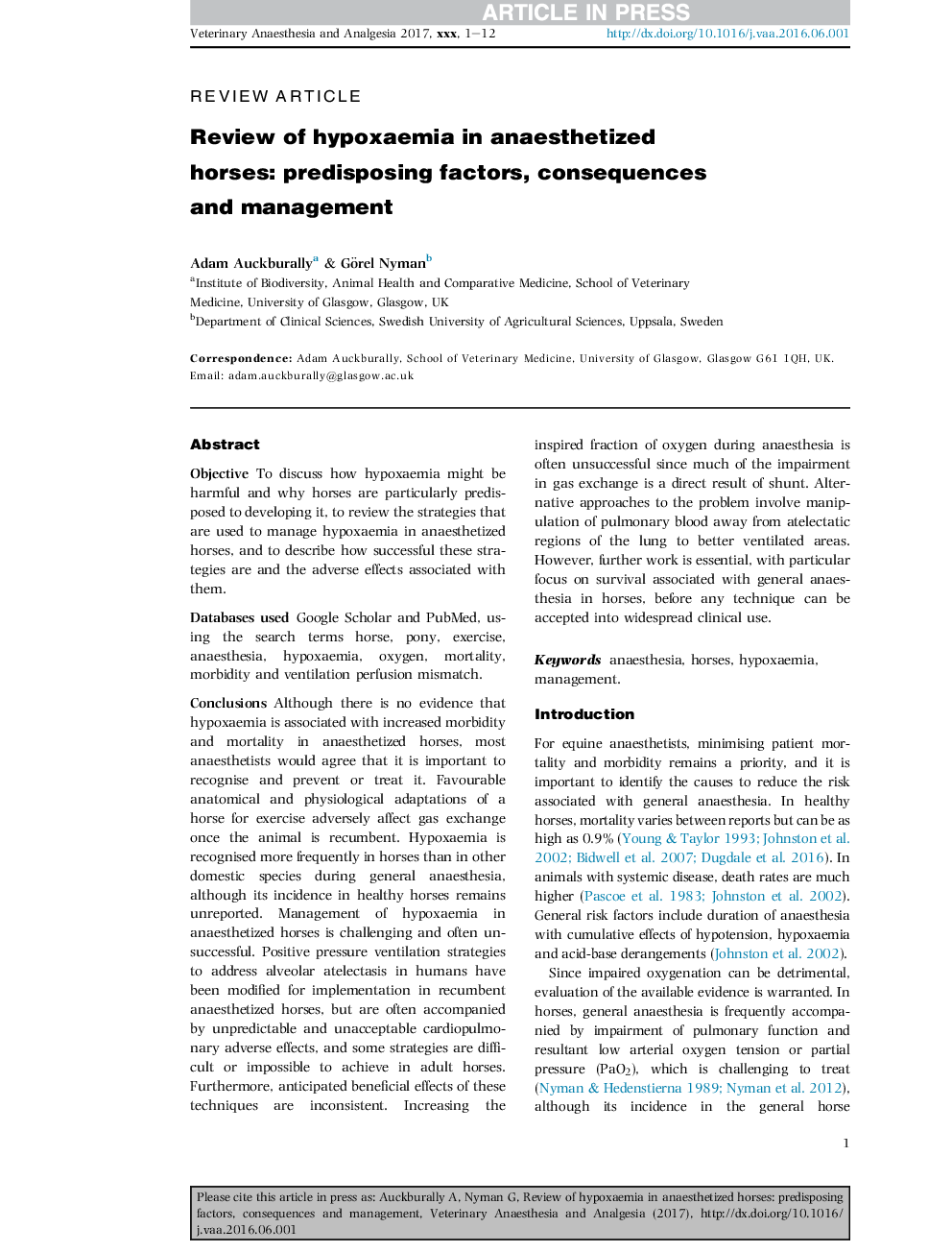| Article ID | Journal | Published Year | Pages | File Type |
|---|---|---|---|---|
| 10998406 | Veterinary Anaesthesia and Analgesia | 2017 | 12 Pages |
Abstract
Although there is no evidence that hypoxaemia is associated with increased morbidity and mortality in anaesthetized horses, most anaesthetists would agree that it is important to recognise and prevent or treat it. Favourable anatomical and physiological adaptations of a horse for exercise adversely affect gas exchange once the animal is recumbent. Hypoxaemia is recognised more frequently in horses than in other domestic species during general anaesthesia, although its incidence in healthy horses remains unreported. Management of hypoxaemia in anaesthetized horses is challenging and often unsuccessful. Positive pressure ventilation strategies to address alveolar atelectasis in humans have been modified for implementation in recumbent anaesthetized horses, but are often accompanied by unpredictable and unacceptable cardiopulmonary adverse effects, and some strategies are difficult or impossible to achieve in adult horses. Furthermore, anticipated beneficial effects of these techniques are inconsistent. Increasing the inspired fraction of oxygen during anaesthesia is often unsuccessful since much of the impairment in gas exchange is a direct result of shunt. Alternative approaches to the problem involve manipulation of pulmonary blood away from atelectatic regions of the lung to better ventilated areas. However, further work is essential, with particular focus on survival associated with general anaesthesia in horses, before any technique can be accepted into widespread clinical use.
Related Topics
Life Sciences
Agricultural and Biological Sciences
Animal Science and Zoology
Authors
Adam Auckburally, Görel Nyman,
